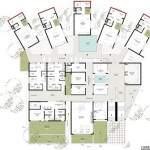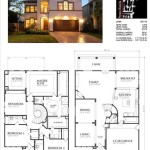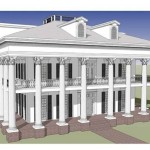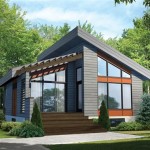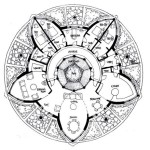Deer Hunting Tree House Plans
Deer hunting from an elevated position offers several advantages, including improved visibility and scent control. A well-designed tree house can serve as a comfortable and effective hunting blind, providing a strategic vantage point overlooking deer trails, feeding areas, or watering holes. However, careful planning and construction are crucial for safety and effectiveness. This article will explore key considerations for deer hunting tree house plans.
Location Selection:
Choosing the right tree and location is paramount. The tree should be sturdy and healthy, capable of supporting the weight of the tree house and its occupants. Consider the prevailing wind direction to minimize scent detection by deer. Ideally, the tree house should be positioned downwind of expected deer movement. Proximity to deer trails, feeding areas, or water sources is also essential for maximizing hunting opportunities. Furthermore, ensure the location complies with local hunting regulations and landowner permissions.Tree House Design:
The design should prioritize functionality, safety, and concealment. A compact design minimizes the visual impact on the surrounding environment and reduces the load on the tree. Elevated platforms with sturdy railings provide a safe and stable hunting position. Enclosed structures with windows or shooting ports offer protection from the elements and conceal movement. Consider incorporating features like silent hinges and latches to minimize noise.Materials Selection:
Durable, weather-resistant materials are essential for a long-lasting tree house. Pressure-treated lumber is a common choice for framing and structural components. Exterior-grade plywood or siding can be used for walls and flooring. Consider using camouflage netting or paint to blend the tree house with the surroundings. Roofing materials should be lightweight and waterproof.Construction Techniques:
Safe and secure construction methods are critical. Consult with experienced builders or engineers, especially if complex designs are involved. Proper tree attachment methods are vital to minimize tree damage and ensure the stability of the tree house. Avoid using nails or screws directly into the tree trunk, as this can weaken the tree and create entry points for disease. Specialized tree house brackets or attachment systems are recommended.Safety Considerations:
Safety should be the top priority throughout the planning and construction process. Ensure the tree house is structurally sound and capable of supporting the intended weight. Install sturdy railings and ensure all access points are secure. Develop an emergency evacuation plan in case of unexpected events. Regularly inspect the tree house for signs of wear and tear and perform necessary maintenance.Legal and Ethical Considerations:
Before building a deer hunting tree house, research and understand local hunting regulations and obtain necessary permits. Ensure the tree house is located on property where hunting is permitted. Adhere to ethical hunting practices and respect wildlife regulations. Dispose of waste properly and minimize the impact on the natural environment.Comfort and Convenience:
While functionality and safety are paramount, consider incorporating features that enhance comfort and convenience. Insulation can help regulate temperature inside the tree house. Comfortable seating or cushions can improve the hunting experience. Shelving or storage compartments can provide space for gear and supplies. Window screens can keep insects out while allowing for ventilation.Access and Egress:
Plan a safe and convenient method for accessing and exiting the tree house. Ladders, stairs, or even zip lines can be used depending on the height and design of the tree house. Ensure the access method is secure and easy to use, even in low-light conditions. Consider using a safety harness or other fall protection equipment, especially during construction and when accessing the tree house in inclement weather.Camouflage and Concealment:
Effective camouflage is crucial for successful deer hunting. Use natural materials and colors that blend seamlessly with the surrounding environment. Consider the changing seasons and adjust the camouflage accordingly. Avoid using shiny or reflective materials that can alert deer to your presence. Strategic placement of branches and foliage can further enhance concealment.Maintenance and Longevity:
Regular maintenance is essential for ensuring the longevity and safety of the deer hunting tree house. Inspect the structure regularly for signs of wear and tear, including damage to wood, fasteners, and attachment systems. Repair or replace any damaged components promptly. Apply weather-resistant coatings to protect the wood from the elements. Trim surrounding vegetation to prevent overgrowth and maintain clear sightlines.Budget and Planning:
Developing a detailed budget and plan is crucial before embarking on a tree house construction project. Estimate the cost of materials, labor, and any specialized equipment required. Factor in the time commitment involved in planning, construction, and ongoing maintenance. Consider seeking professional assistance for complex designs or if you lack experience in tree house construction.
Tree House Plans Cool Houses Designs
:max_bytes(150000):strip_icc()/bobdeer-5a7b352cc5542e0037d49a08.jpg?strip=all)
11 Free Deer Stand Plans In A Variety Of Sizes
:max_bytes(150000):strip_icc()/stand-plan-5808e9213df78c2c73fcf574.jpg?strip=all)
11 Free Deer Stand Plans In A Variety Of Sizes

San Pedro Treehouse Plans To Build In One Tree Or Free Standing House Diy

15 Best Free Diy Deer Blind Plans To Build Your Own Hunting Stands

Building The Ultimate Tree Stand Part 4

Tree Stand Hunting Homemade House Diy
:max_bytes(150000):strip_icc()/texan-deer-stand-5808e5b83df78cbc289cd8ea.jpg?strip=all)
11 Free Deer Stand Plans In A Variety Of Sizes

Deer Stand Plans 4x8 Free Construct101

Diy Treehouse Plan No 05 Omak Designed By Pete Nelson Be In A Tree

